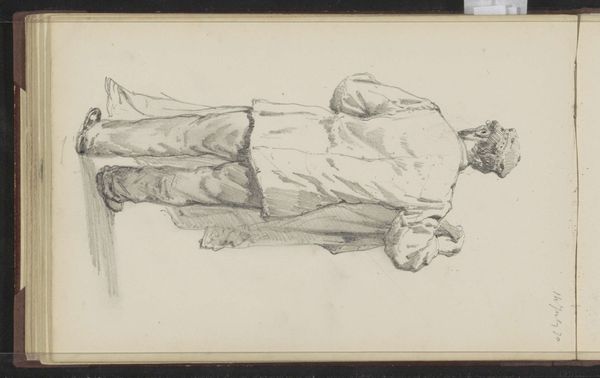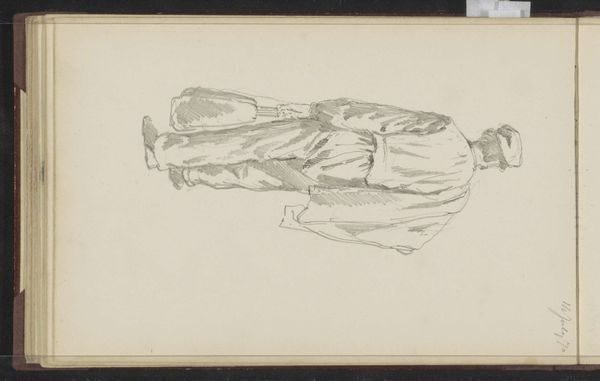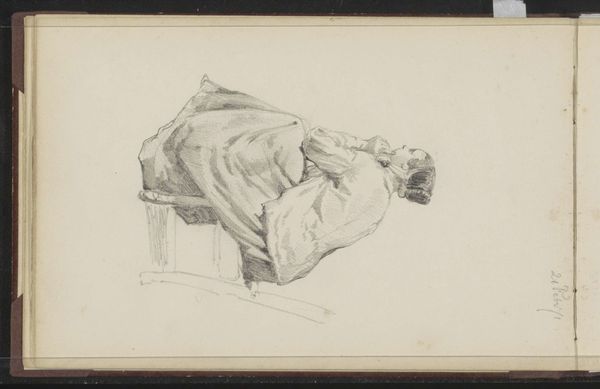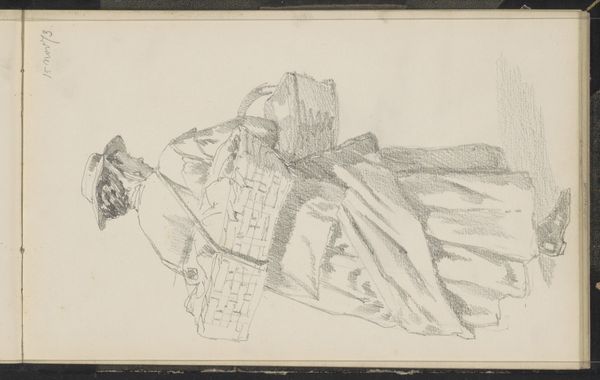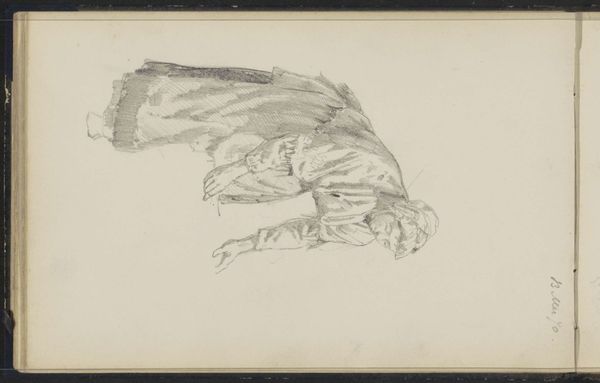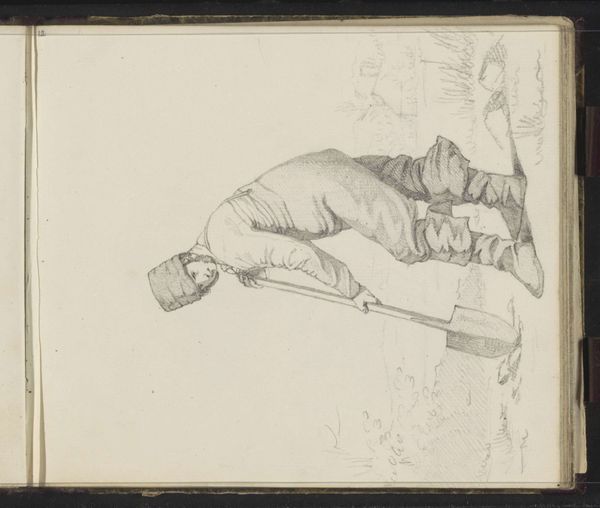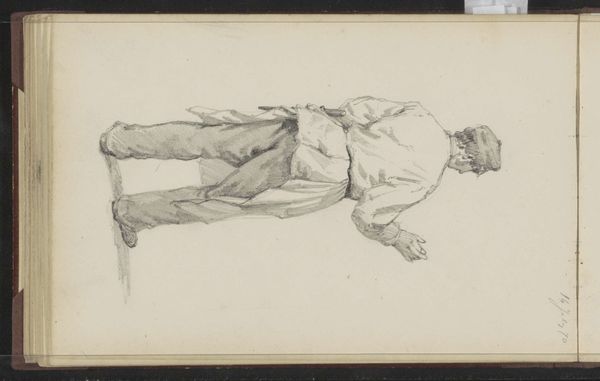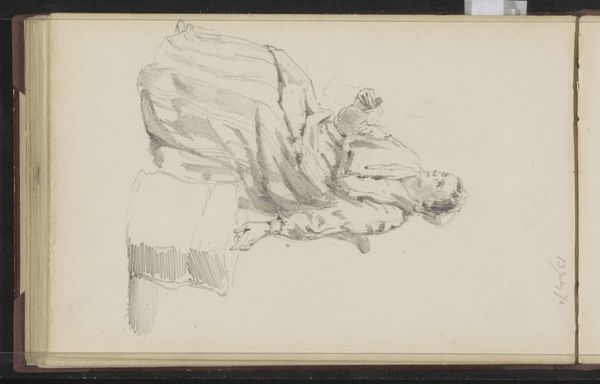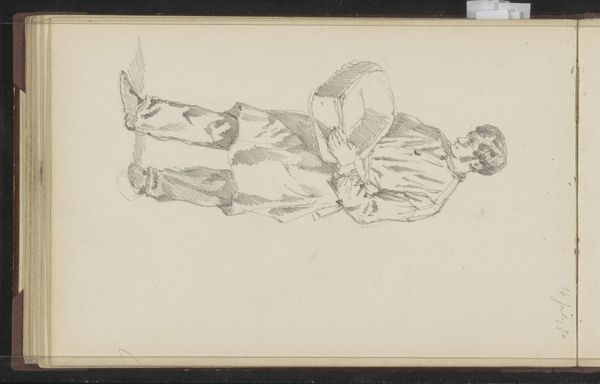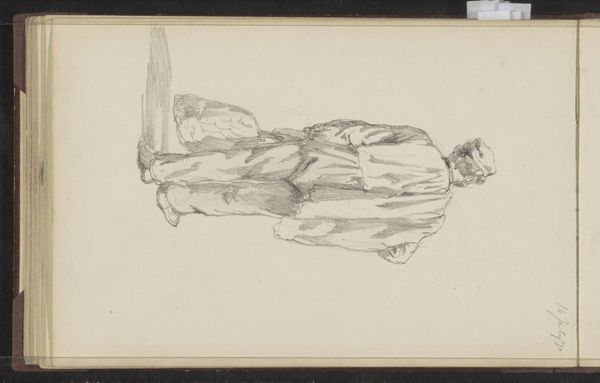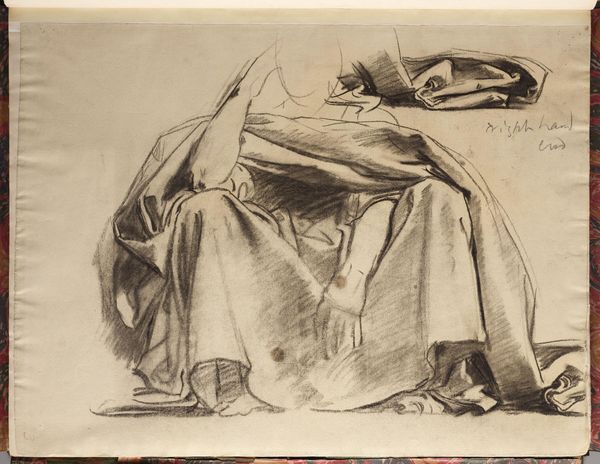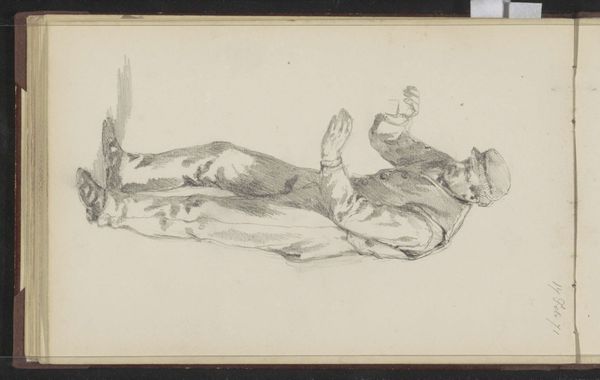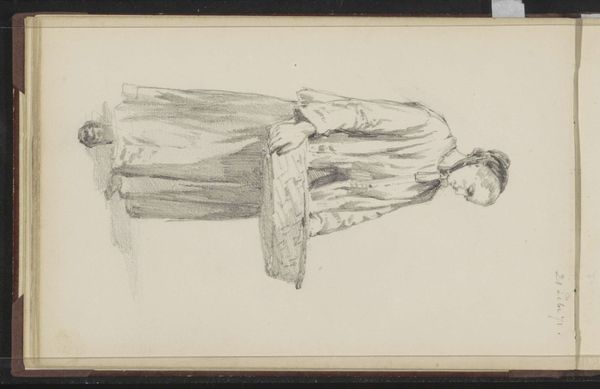
drawing, paper, pencil
#
portrait
#
drawing
#
pencil sketch
#
paper
#
pencil drawing
#
pencil
#
genre-painting
Copyright: Rijks Museum: Open Domain
Editor: Here we have Cornelis Springer’s "Zittende man met een mand," likely from 1871-72. It's a pencil drawing on paper, currently held at the Rijksmuseum. It’s such a delicate and intimate sketch of, I suppose, a working-class man. How do you interpret this work? Curator: It is a captivating piece, isn't it? Looking at it through a socio-historical lens, this drawing offers a glimpse into the lives of the working class during a time of significant industrial and social change. Springer, better known for his architectural paintings, here gives us a genre scene that touches upon class, labor, and representation. Notice the man’s posture. Does it strike you as burdened, or resilient? Editor: I think I see a bit of both. The weight of the basket is clear in the line work. But the way he is holding it almost seems assertive too. What do you make of the almost casual nature of it? Curator: That contrast is key, isn't it? In focusing on an ordinary individual, Springer elevates the working class to the realm of art. How do you feel that this portrayal challenges or reinforces the traditional power dynamics of the art world, where for a long time, only the elite were deemed worthy subjects? Editor: I guess it is subtly subversive. It validates the lives and experiences of people often overlooked by art history. Is there something about that historical time that made him take interest in this man? Curator: This work raises important questions about whose stories are told, and how. It prompts us to consider art's role in either perpetuating or challenging social hierarchies. Are we really seeing an individual, or just some kind of symbol? Editor: It has layers! I see how much historical context shapes our understanding and challenges us to question representation and social hierarchies within art. Curator: Exactly. Art provides a rich and critical lens for re-evaluating history and its ongoing impact.
Comments
No comments
Be the first to comment and join the conversation on the ultimate creative platform.
